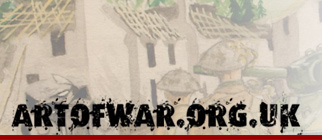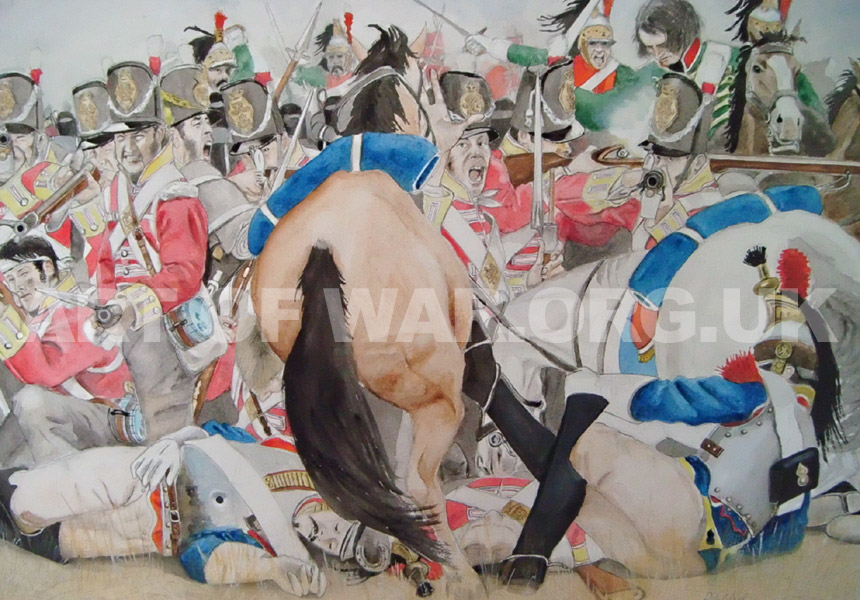| |
Waterloo 1815
British Infantry formed in squares to repel Marshal Ney's cavalry attack.
Napoleon Boneparte escaped from Elba on 26 february 1815 where he had beeen exiled. He arrived in Paris on 20 March and quickly reformed his 'Grande Armee'of 140,000 soldiers.
The rest of Europe, consisting of the United Kingdom, Russia, Austria and Prussia began to re-assemble their armies preparing to resume the war to overthrow Napoleon and put an end to his rule.
Napoleon thought that if he could destroy the Allies in Belgium before they were reinforced he could knock out the British and the Prussians.
The Duke of Wellington commanded one Allied army in Belgium consisting of 67000 soldiers from Britain, Brunswick, Nassau, Hanover and the Netherlands. Marshal Blucher was in command of 70000 Prussians at Lingy.
Napoleon split his army and attacked the Prussians and although unable to destroy them, he forced them to retreat to Wavre.
Napoleon's left wing under Marshal Ney blocked Wellington at Quatra Bras stopping him from aiding Blucher. The Prussian defeat at Lingy made the Quatre Bras position untenable, and Wellington was forced to withdraw back towards Brussels.
Blucher told Wellington he would march from Wavre to his aid with as many men as he could muster as soon as he had regrouped. Wellington took the high ground at Mont St.Jean near the village of Waterloo and waited for Napoleon to attack.
Napoleon outnumbered Wellington in men and guns and was confident of victory. Throughout the afternoon the French repeatedly attacked the Allied lines, crucially the farm of La Haye Sante, each attack more desperate than the last. However, as evening fell the Prussians arrived to reinforce Wellington's weakened lines and attack Napoleon's right flank. Napoleon tried one last time to break through launching his undefeated Old Guard at the British lines, but the British line held. Wellington then raised his hat to give the signal for a general pursuit of the retiring French troops and the British line went forward.
The Allies had defeated Napoleon and ended 26 years of fighting between European powers and France.
Napoleon was exiled to St. Helena where he died on May 5th. 1821.
|
|






